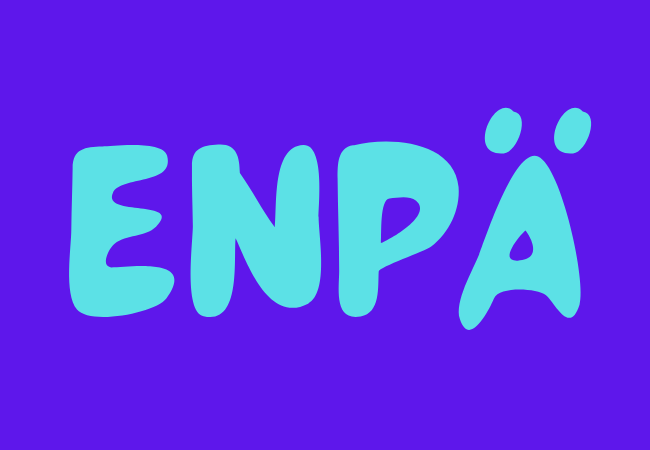Enpä: Unveiling the Mysteries of a Finnish Expression

Finnish is a language full of fascinating expressions, and “enpä” is one of them. Have you ever stumbled upon a word that seems simple but holds layers of meaning? That’s what “enpä” is all about. This little word is a staple in Finnish conversations, reflecting nuances that might seem elusive at first glance. But worry not! This article will guide you through the ins and outs of “enpä,” its significance, and how you can master it.
The Linguistic Roots of “Enpä”
To truly understand “enpä,” we must first dig into its roots. The word “enpä” is derived from the Finnish word “en,” which means “I do not.” The suffix “-pä” adds an emphasis, often used to highlight a sense of certainty or finality. Historically, Finnish expressions have evolved from the fusion of simple roots with suffixes, creating rich and diverse meanings. This historical layering makes “enpä” a powerful word in the Finnish lexicon.
Understanding “Enpä” in Modern Usage
So, how is “enpä” used today? Imagine you’re in a conversation where someone asks if you want to go out in the rain. A simple “no” might suffice, but “enpä” adds a touch of finality and politeness. It’s not just a refusal but a gentle nudge that your decision is firm yet considerate. This expression is common in everyday chats, subtly conveying a definitive yet courteous stance.
Grammatical Insights
In the realm of Finnish grammar, “enpä” fits in seamlessly. It acts as an emphatic negative, often found at the beginning of sentences. For example, “Enpä usko,” translates to “I don’t believe so.” The placement and tone can alter the sentence’s impact, showing just how versatile “enpä” can be. Variations like “enpähän” or “enpä sittenkään” add further nuances, making the language rich and dynamic.
“Enpä” in Everyday Conversations
Imagine you’re having coffee with a Finnish friend. They ask if you want more sugar. You might respond with “enpä,” indicating a polite yet firm “no, thank you.” The beauty of “enpä” lies in its ability to soften a refusal, making everyday interactions smoother and more respectful. Its tone can vary from casual to slightly formal, depending on the context.
Regional Variations
Finland is a land of diverse dialects, and “enpä” showcases this beautifully. In the south, you might hear a straightforward “enpä,” while in the north, variations like “enpä oo” (I’m not) are common. Each region adds its unique flavor, reflecting the local culture and linguistic quirks. These differences enrich the language, offering a glimpse into Finland’s vibrant linguistic landscape.
“Enpä” in Finnish Literature and Media
Finnish literature and media often utilize “enpä” to convey nuanced emotions. In novels, it might appear in dialogues, emphasizing a character’s resolve or doubt. In movies and TV shows, “enpä” helps portray authentic Finnish interactions, adding depth to the narrative. The word’s presence in modern media underscores its enduring relevance and adaptability.
Learning “Enpä” as a Non-Native Speaker
For non-native speakers, mastering “enpä” can be a delightful challenge. Start by listening to native conversations and noting how “enpä” is used. Practice using it in different contexts, paying attention to tone and placement. Common mistakes include overuse or incorrect emphasis, so it’s essential to understand its subtleties. Practical exercises like role-playing can help you get a better grasp.
Comparative Analysis
Languages worldwide have their unique expressions similar to “enpä.” In English, phrases like “I don’t think so” or “Not really” capture similar sentiments. Comparing these can offer insights into cultural nuances and communication styles. Understanding these differences and similarities can enhance your appreciation of linguistic diversity.
“Enpä” in Digital Communication
The digital age has transformed how we use language, and “enpä” is no exception. On social media, you might see “enp” in comments or messages, often adding a touch of personality. Its usage in digital communication highlights the blending of traditional expressions with modern platforms, showcasing the language’s evolution.
Teaching “Enp”
Teaching “enp” requires a mix of grammatical instruction and practical application. Language classes often use interactive methods, like conversational practice, to help students understand its usage. Educational resources, including online tools and language apps, can also provide valuable support. Incorporating “enä” in the Finnish language curriculum ensures learners appreciate its subtleties and importance.
Future of “Enp”
As languages evolve, so does the usage of words like “enp.” Predictions suggest that while the core meaning will remain, new variations might emerge, influenced by globalization and technological advancements. Understanding these potential changes can help language enthusiasts and learners stay ahead of linguistic trends.
Personal Anecdotes and Stories
Native speakers often have amusing stories involving “enä.” From funny misunderstandings to moments of cultural insight, these anecdotes highlight the word’s impact on daily life. For instance, one might recall a humorous incident where “enpä” was misinterpreted, leading to a light-hearted exchange. These stories enrich our understanding of how “enä” shapes interactions.
Conclusion
In summary, “enä” is a small word with significant depth. It reflects the intricacies of Finnish culture and language, offering a glimpse into the nuances of communication. Understanding and mastering “enpä” can enhance your Finnish language skills, making your interactions more authentic and engaging. So next time you’re chatting in Finnish, don’t forget to sprinkle in an “enp” and experience its unique charm.
FAQs
What does “enp” literally translate to in English?
“Enpä” translates to “I don’t” with an emphasis, often used to signify a polite yet firm refusal or decision.
How can I practice using “enä” effectively?
Listen to native speakers, practice in conversational contexts, and pay attention to the tone and placement of “enä” in sentences.
Are there any regional slang variations of “enä”?
Yes, regional variations exist, such as “enpä oo” in the north, reflecting local dialects and cultural influences.
Can “enp” be used in formal writing?
While primarily used in informal contexts, “enä” can appear in formal writing to convey a definitive stance politely.
How has the use of “enä” changed with the advent of social media?
Social media has popularized “enä,” making it a common expression in digital conversations, adding a touch of personality and cultural flavor.



